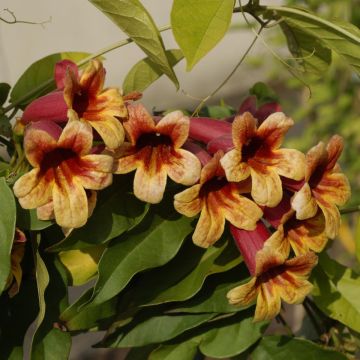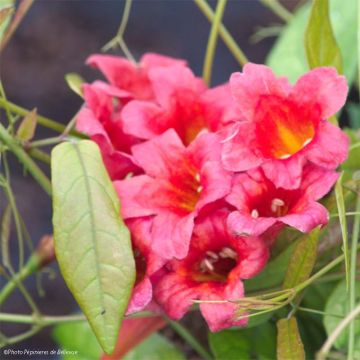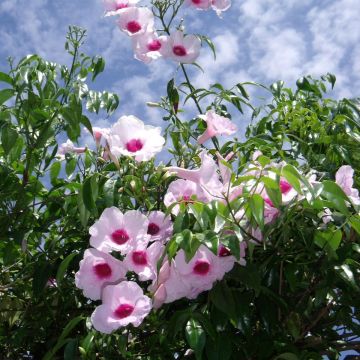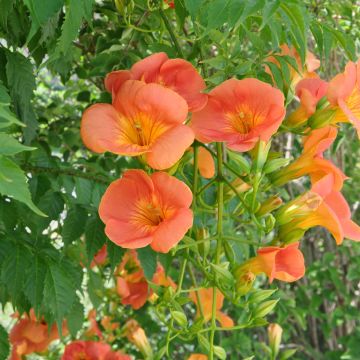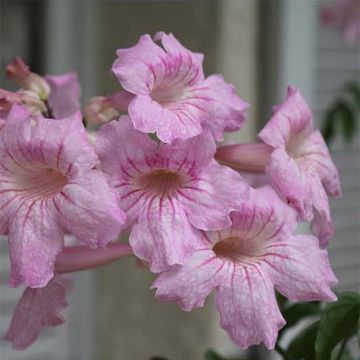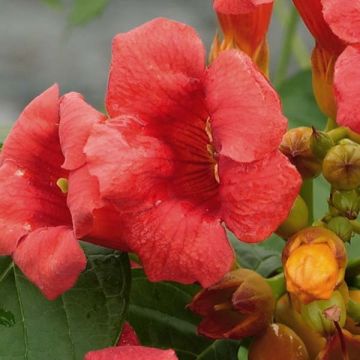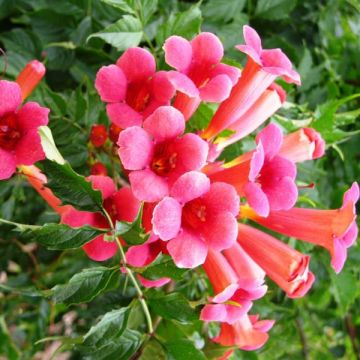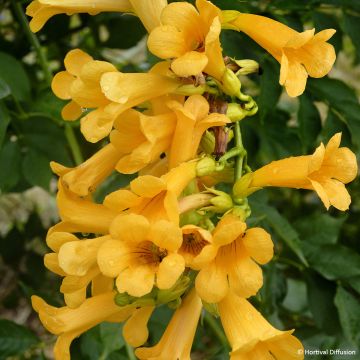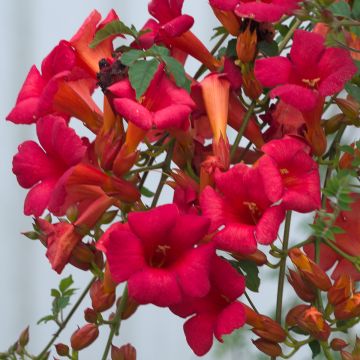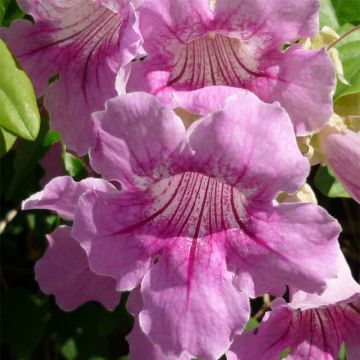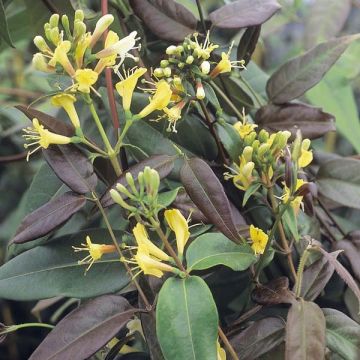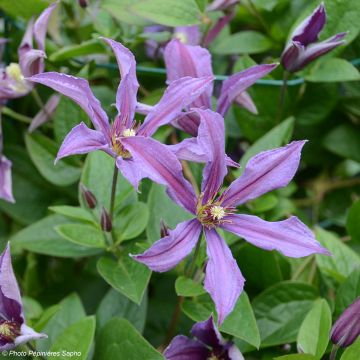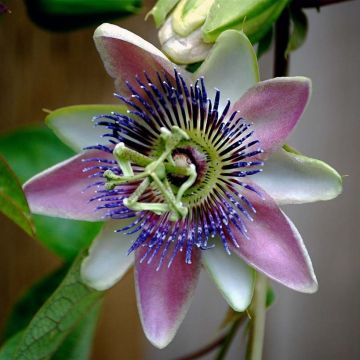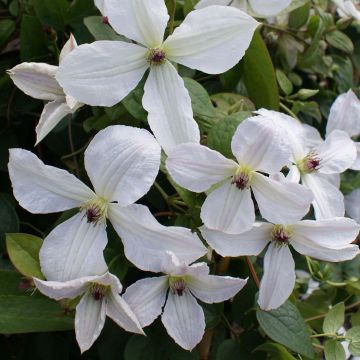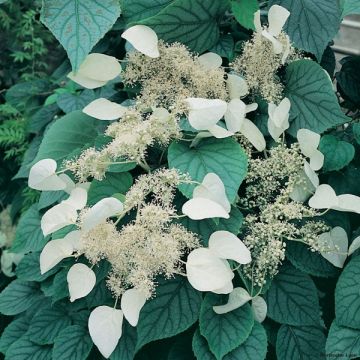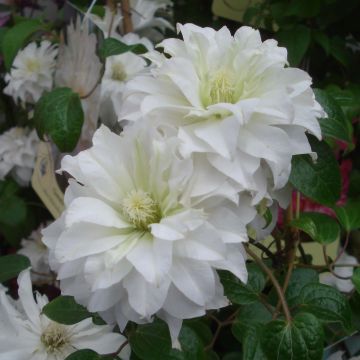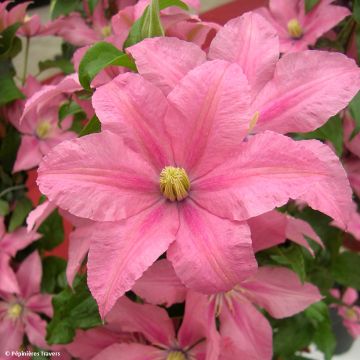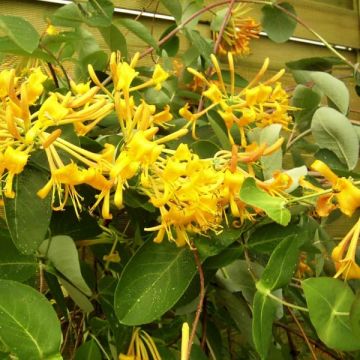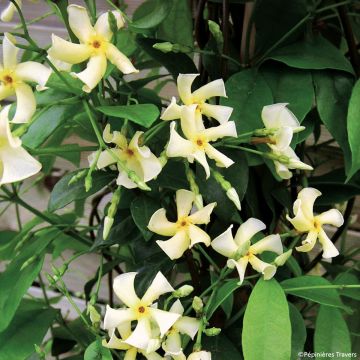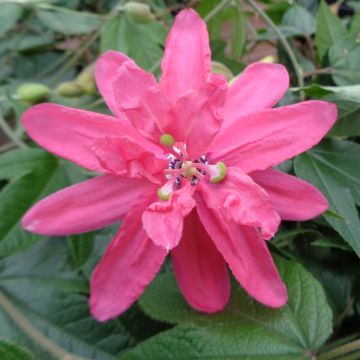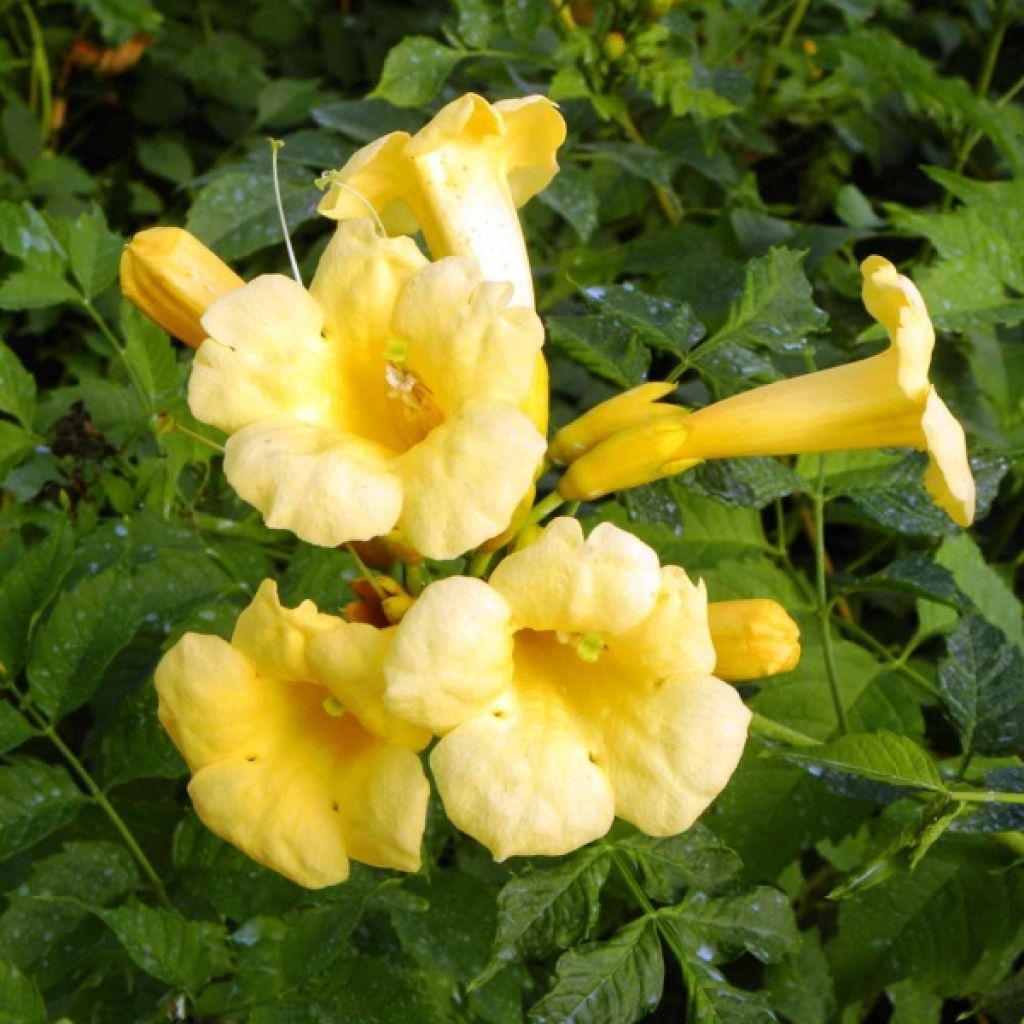

Campsis radicans Yellow Trumpet
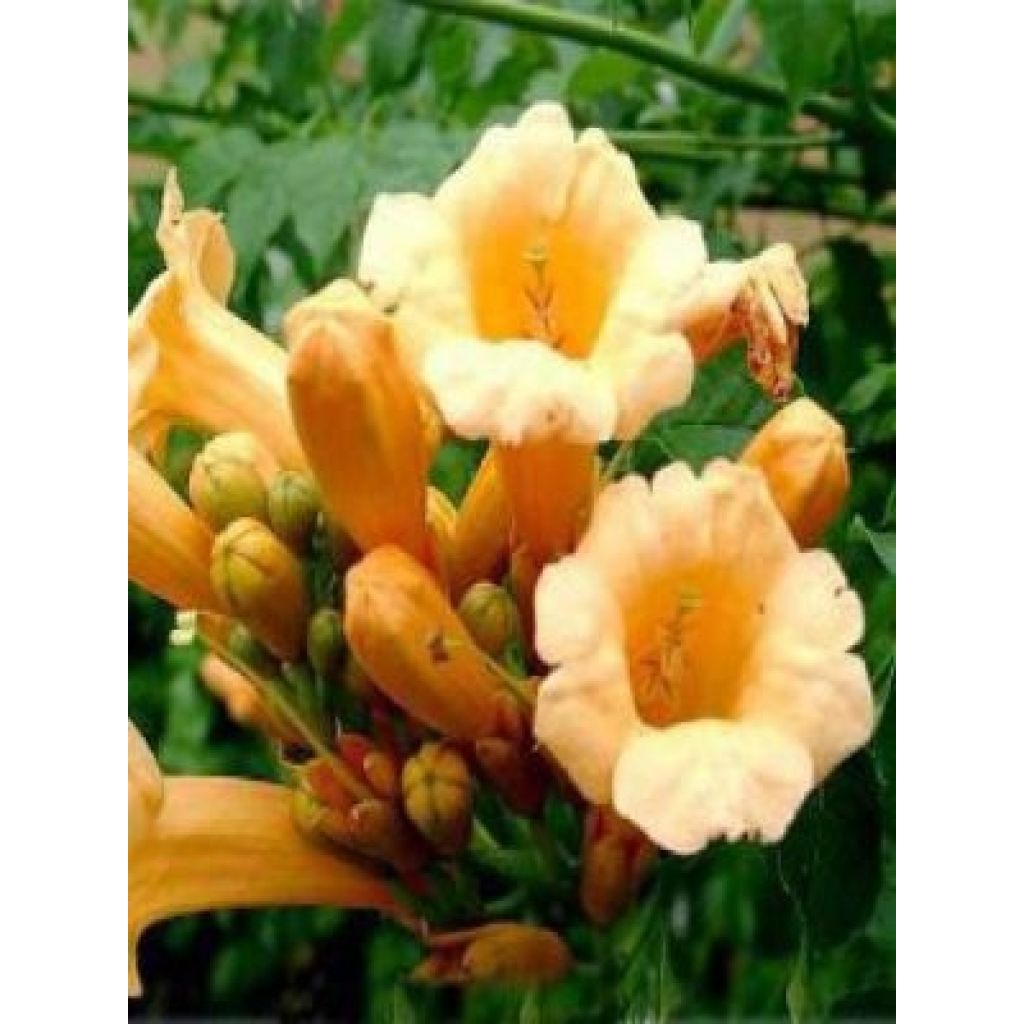

Campsis radicans Yellow Trumpet
Campsis radicans Yellow Trumpet
Campsis radicans Yellow Trumpet
Trumpet Vine
Thanks to Adeline for order preparation and quality control, and Laëticia from the shipping department, the Trumpet Vine received as a replacement under warranty has no foliage. I have planted it near a wall and the 'Nelson Monfort' rose, and now I cautiously await signs of growth... or not?
Thierry, 26/01/2022
This item cannot be shipped to the selected country
Delivery charge from €5.90
More information
Delivery charge from €5.90
More information
Schedule delivery date,
and select date in basket
This plant carries a 6 months recovery warranty
More information
We guarantee the quality of our plants for a full growing cycle, and will replace at our expense any plant that fails to recover under normal climatic and planting conditions.
From €5.90 for pickup delivery and €6.90 for home delivery
Express home delivery from €8.90.
Does this plant fit my garden?
Set up your Plantfit profile →
Description
Campsis radicans 'Yellow trumpet' or Flava is a variant of the trumpet vine with yellow flowers, less known than the usual red-orange trumpet-shaped form. This beautiful climbing plant, perfectly hardy, clings to any rough support available to it through climbing roots, similar to ivy. A good solution to revive old walls or ugly buildings, which it drapes with beautiful bright green foliage and clusters of flowers.
Campsis radicans is a plant of the Bignoniaceae family originally from the southeastern United States, specifically from a geographical area covering Missouri, Texas, and Virginia. In nature, it is found in wooded areas. Resistant to diseases and pests, Campsis radicans tolerates cold, as well as heat and drought once well established. It is undemanding in terms of soil, as long as it is deep enough to accommodate its fairly developed root system. The yellow-flowered form of this trumpet vine is marketed under the name 'Yellow Trumpet' or 'Flava'. It seems to be slightly less floriferous than the typical form.
Campsis radicans is a bush with a slightly suckering stump, robust and vigorous, capable of growing up to 1 metre per year under good conditions. As an adult, Campsis Yellow Trumpet reaches about 6m (20ft) in height and 4m (13ft) in width. The long branches bear leaves divided into 7 to 11 lanceolate leaflets, 5 to 7cm (2 to 3in) long, with toothed edges, of a bright green colour. The foliage turns golden yellow in autumn before falling. The stems produce very short and tight adventitious roots that allow the plant to attach itself to a tree or wall. Flowering occurs from July to September, on the current year's shoots. It takes the form of terminal clusters (or cymes) consisting of 4 to 12 yellow flowers, shaped like long trumpets. Each flower is composed of a long tubular calyx widening into 5 lobes that reveal a prominent pistil. Pollinated by insects, the flowers are followed by brown pod-shaped fruits, containing a large number of small winged seeds that will be dispersed by the wind. With age, the copper-brown bark covering the branches flakes off in strips.
Campsis radicans Yellow Trumpet is a good wall covering plant in a sunny position, and can also be grown in a large container to decorate patios and balconies. For example, combine it with other unique climbing plants such as Akebia quinata Silver Bells, Actinidia kolomikta, Holboellia coriacea, or Clematis Blue Angel, which is very blue, to create a colorful scene.
Translation Analysis:
The Campsis radicans 'Yellow trumpet' or Flava is a variant of the trumpet vine or Virginia jasmine with yellow flowering, less known than the usual red-orange trumpet-shaped form. This beautiful climbing plant, perfectly hardy, clings to any rough support available to it through climbing roots, similar to ivy. A good solution to revive old walls or ugly buildings, which it drapes with beautiful bright green foliage and clusters of flowers.
- The translation accurately conveys the meaning and context of the original text. The HTML code and URLs have been preserved.
The Campsis radicans is a plant of the bignoniaceae family originally from the southeastern United States, specifically from a geographical area covering Missouri, Texas, and Virginia. In nature, it is found in wooded areas. Resistant to diseases and pests, Campsis radicans tolerates cold, as well as heat and drought once well established. It is not demanding in terms of soil, as long as it is deep enough to accommodate its fairly developed root system. The yellow-flowered form of this trumpet vine is marketed under the name 'Yellow Trumpet' or 'Flava'. It seems to be slightly less floriferous than the typical form.
- The translation accurately conveys the meaning and context of the original text. The HTML code and URLs have been preserved.
It is a sarmentous bush with slightly suckering stump, robust and vigorous, capable of growing up to one meter per year under good conditions. As an adult, the Campsis Yellow Trumpet reaches about 6m (20ft) in height and 4m (13ft) in width. The long branches bear leaves divided into 7 to 11 lanceolate leaflets, 5 to 7cm (2 to 3in) long, with toothed edges, of a bright green color. The foliage turns golden yellow in autumn before falling. The stems produce very short and tight adventitious roots that allow the plant to attach itself to a tree or wall. Flowering occurs from July to September, on the current year's shoots. It takes the form of terminal clusters (or cymes) consisting of 4 to 12 yellow flowers, shaped like long trumpets. Each flower is composed of a long tubular calyx widening into 5 lobes that reveal a prominent pistil. Pollinated by insects, the flowers are followed by brown pod-shaped fruits, containing a large number of small winged seeds that will be dispersed by the wind. With age, the copper-brown bark covering the branches flakes off in strips.
- The translation accurately conveys the meaning and context of the original text. The HTML code and URLs have been preserved.
Campsis radicans Yellow Trumpet is a good wall cover in sunny exposure, a pretty disguise for fences and utility constructions, and can also be grown in a large container to embellish terraces and balconies. For example, combine it with other original climbing plants such as Akebia quinata Silver Bells, Actinidia kolomikta, Holboellia coriacea, or Clematis Blue Angel, which is very blue, to create a colorful scene.
Campsis radicans Yellow Trumpet in pictures
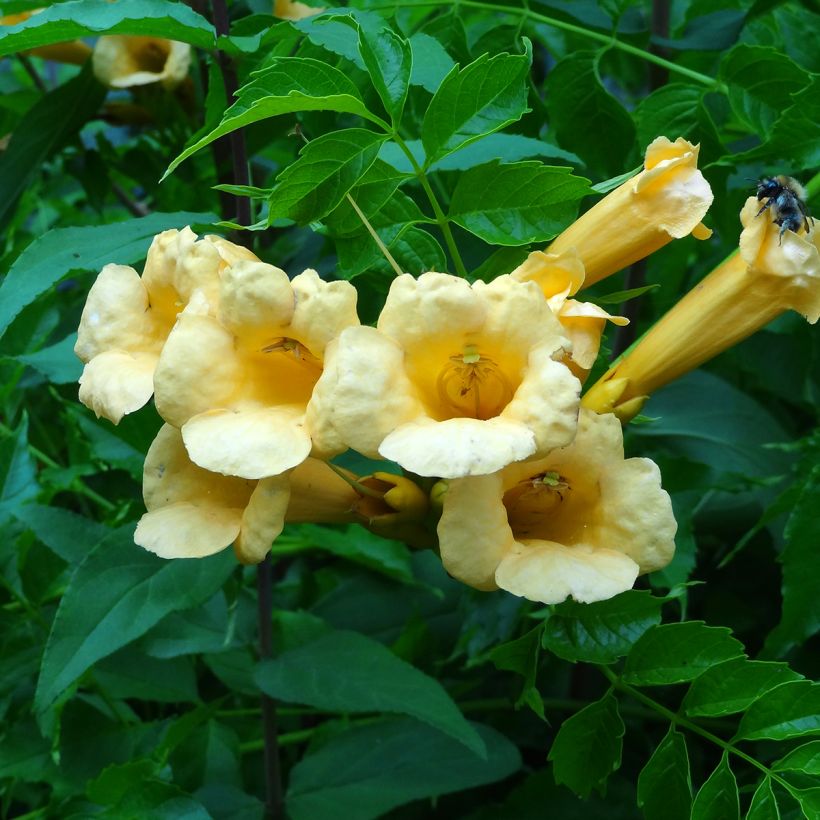

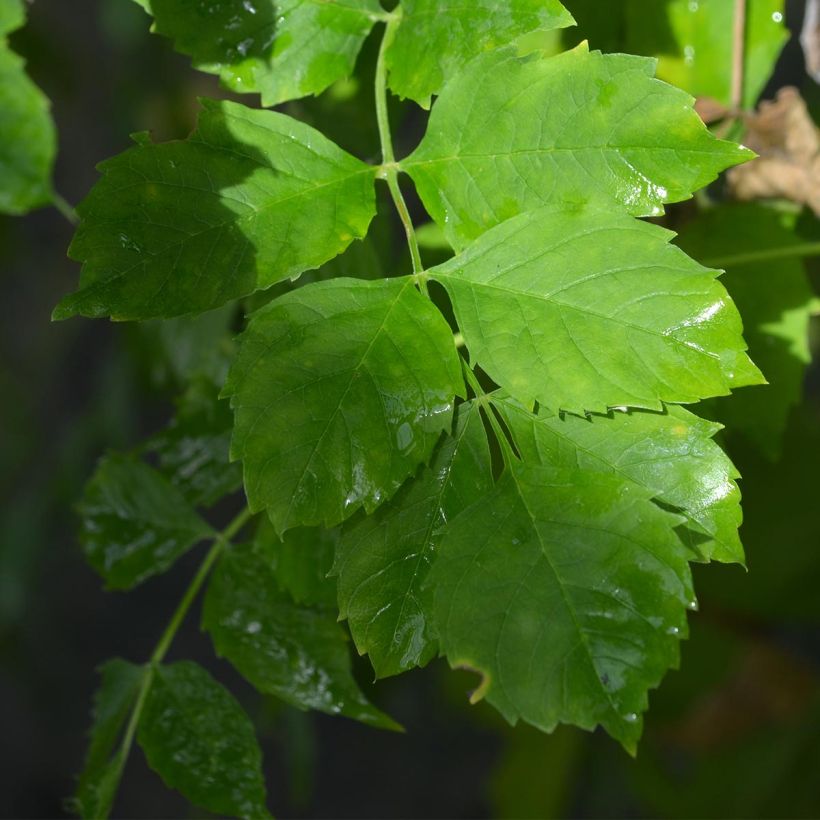

Plant habit
Flowering
Foliage
Botanical data
Campsis
radicans
Yellow Trumpet
Bignoniaceae
Trumpet Vine
North America
Other Campsis - Trumpet Creeper
Planting and care
Campsis radicans Yellow Trumpet should be planted in spring or early autumn in a fertile, deep, moist but well-drained soil, preferably against a sunny wall and sheltered from cold winds in regions with very cold winters. It can tolerate a slightly shadier position in a hot climate. Once well established, this plant can withstand heat and drought in all our regions. Prune the branches in late March to three-quarters of their length to encourage bushier growth. Protect young plants from heavy frosts with a mulch. The stump can withstand -20°C (-4°F), while the stems can withstand -15°C (5°F). This trumpet vine is not very susceptible to diseases and parasites.
Planting period
Intended location
Care
-
, onOrder confirmed
Reply from on Promesse de fleurs
Summer flowering climbers
Haven't found what you were looking for?
Hardiness is the lowest winter temperature a plant can endure without suffering serious damage or even dying. However, hardiness is affected by location (a sheltered area, such as a patio), protection (winter cover) and soil type (hardiness is improved by well-drained soil).

Photo Sharing Terms & Conditions
In order to encourage gardeners to interact and share their experiences, Promesse de fleurs offers various media enabling content to be uploaded onto its Site - in particular via the ‘Photo sharing’ module.
The User agrees to refrain from:
- Posting any content that is illegal, prejudicial, insulting, racist, inciteful to hatred, revisionist, contrary to public decency, that infringes on privacy or on the privacy rights of third parties, in particular the publicity rights of persons and goods, intellectual property rights, or the right to privacy.
- Submitting content on behalf of a third party;
- Impersonate the identity of a third party and/or publish any personal information about a third party;
In general, the User undertakes to refrain from any unethical behaviour.
All Content (in particular text, comments, files, images, photos, videos, creative works, etc.), which may be subject to property or intellectual property rights, image or other private rights, shall remain the property of the User, subject to the limited rights granted by the terms of the licence granted by Promesse de fleurs as stated below. Users are at liberty to publish or not to publish such Content on the Site, notably via the ‘Photo Sharing’ facility, and accept that this Content shall be made public and freely accessible, notably on the Internet.
Users further acknowledge, undertake to have ,and guarantee that they hold all necessary rights and permissions to publish such material on the Site, in particular with regard to the legislation in force pertaining to any privacy, property, intellectual property, image, or contractual rights, or rights of any other nature. By publishing such Content on the Site, Users acknowledge accepting full liability as publishers of the Content within the meaning of the law, and grant Promesse de fleurs, free of charge, an inclusive, worldwide licence for the said Content for the entire duration of its publication, including all reproduction, representation, up/downloading, displaying, performing, transmission, and storage rights.
Users also grant permission for their name to be linked to the Content and accept that this link may not always be made available.
By engaging in posting material, Users consent to their Content becoming automatically accessible on the Internet, in particular on other sites and/or blogs and/or web pages of the Promesse de fleurs site, including in particular social pages and the Promesse de fleurs catalogue.
Users may secure the removal of entrusted content free of charge by issuing a simple request via our contact form.

































